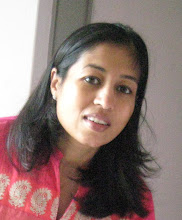What better complement to sun-drenched sandy beaches and swaying palm trees than locally made batik, you might ask. So it's only natural and inevitable that Penang island, being a world-famous tourist destination, has a thriving batik industry in manufacturing, exporting and retailing.
Shops and stalls carrying batik items are too numerous to mention but they can be found along the Batu Ferringhi tourist belt, Penang Road, Campbell Street and KOMTAR to name a few. Most souvenir and clothing shops will stock at least several batik items.One of the most popular batik retailers in George Town is Sam's Batik House, located on Penang Road. Founded in 1982 by Shamdas Bhaktani, the business has since been taken over by his two sons Monohar and Prem. Monohar's wife Rachel manages the store and is a source of information on batik items.
It goes without saying that batik has long been part of the Malaysian national culture. Its versatile nature and esthetically pleasing designs make it the ideal material for a variety of things, men's shirts, sarongs, women's kaftans, aprons, slippers, picture frames, gift boxes, paintings, bed spreads and even wall and furniture coverings. As a fashion item, batik will not look out-of-place in any casual, formal or high fashion wear. In fact, most official functions in Malaysia allow the wearing of batik in place of the more somber coat and tie. The cabin-crew staff of Malaysia's national carrier have always worn batik as their uniforms, even from the days when it was known as MSA (Malaysia-Singapore Airlines). Although batik has never gone out of fashion in Malaysia, it has seen a recent upswing in popularity, due largely to the efforts of the country's First Lady, Datin Seri Endon Mahmood.
Her passion for all things batik took shape in a campaign called "Batik, Crafted for the World" which aims to spotlight Malaysian produced batik products via promotions and activities.
Penang Batik has come to be used as a generic term which refers to the process of dyeing fabric by making use of a resist technique; covering areas of cloth with a dye-resistant substance to prevent them absorbing colors. The technique is thought to be over a thousand years old and historical evidence demonstrates that cloth decorated with this resist technique was in use in the early centuries AD in Africa, the Middle East and in several places in Asia.
Although most Penang batik fabric is now decorated and tailored by machine, there still remains a considerable market for high-quality, hand-made batik.
Shops and stalls carrying batik items are too numerous to mention but they can be found along the Batu Ferringhi tourist belt, Penang Road, Campbell Street and KOMTAR to name a few. Most souvenir and clothing shops will stock at least several batik items.One of the most popular batik retailers in George Town is Sam's Batik House, located on Penang Road. Founded in 1982 by Shamdas Bhaktani, the business has since been taken over by his two sons Monohar and Prem. Monohar's wife Rachel manages the store and is a source of information on batik items.
It goes without saying that batik has long been part of the Malaysian national culture. Its versatile nature and esthetically pleasing designs make it the ideal material for a variety of things, men's shirts, sarongs, women's kaftans, aprons, slippers, picture frames, gift boxes, paintings, bed spreads and even wall and furniture coverings. As a fashion item, batik will not look out-of-place in any casual, formal or high fashion wear. In fact, most official functions in Malaysia allow the wearing of batik in place of the more somber coat and tie. The cabin-crew staff of Malaysia's national carrier have always worn batik as their uniforms, even from the days when it was known as MSA (Malaysia-Singapore Airlines). Although batik has never gone out of fashion in Malaysia, it has seen a recent upswing in popularity, due largely to the efforts of the country's First Lady, Datin Seri Endon Mahmood.
Her passion for all things batik took shape in a campaign called "Batik, Crafted for the World" which aims to spotlight Malaysian produced batik products via promotions and activities.
Penang Batik has come to be used as a generic term which refers to the process of dyeing fabric by making use of a resist technique; covering areas of cloth with a dye-resistant substance to prevent them absorbing colors. The technique is thought to be over a thousand years old and historical evidence demonstrates that cloth decorated with this resist technique was in use in the early centuries AD in Africa, the Middle East and in several places in Asia.
Although most Penang batik fabric is now decorated and tailored by machine, there still remains a considerable market for high-quality, hand-made batik.


No comments:
Post a Comment